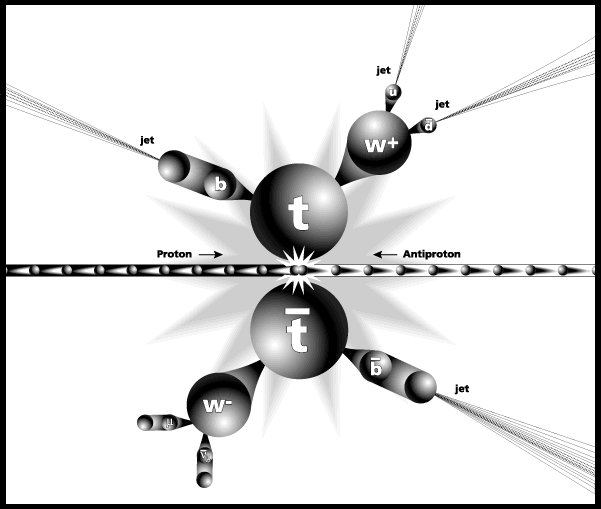Antimatter
Antimatter by definition is the mirror image of matter. It is equal and opposite. For example, every electron should hypothetically have a positron (an electron with a positive charge) partner. When antimatter and matter collide, they cancel each other out in a process called annihilation. This process produces an immense amount of energy, as well as gamma rays and sometimes more matter. Antimatter collisions have helped us to discover many subatomic fundamental particles.
Also, whenever matter is created, its antimatter opposite is created as well. This accounts for one of the greatest questions in High Energy Physics: why is there more matter than antimatter? Although we could not exist without this asymmetry, it does not make any sense. However, two theories have been produced in an attempt to explain the lack of antimatter.
- GUT Baryogenesis: This theory is based on the belief that baryons (protons and neutrons) underwent unusual reactions during the GUT (Grand Unification) stage of the early universe.
- Electroweak Baryogenesis: This newer theory is based on the belief that, during the Electroweak Phase Transition of the early universe, the hypothetical Higgs molecule aquired its unusual property to have mass in a vacuum. It is believed that antimatter particles were transformed into matter in the same way.
- X Boson Decay Baryogenesis: This theory is based on the belief that the no longer existing exotic particle called the X Boson had unusual decay properties; instead of decaying into matter and antimatter, it either decayed into just matter or just antimatter. With even the slightest inequality in the number of decay reactions, matter would be given an advantage over antimatter or vice versa.
Machines have been built to try to produce antimatter in laboratories. So far, antielectrons (positrons), antiprotons, antineutrons, antinuclei, and antihydrogen have all been produced. Antimatter decelerators use penning traps, devices that use magnetic fields to trap antimatter particles for long periods of time. Antihydrogen was formed by forcing a positron to rotate an antiproton.

Antimatter Collision Biproducts - Image from http://livefromcern.web.cern.ch
Production of the Top Quark through Antimatter Collisions - Image from http://www.fnal.gov
History
Here is a timeline of the major breakthroughs in the discovery of antimatter:
1928: Paul Dirac writes equation combining special relativity and quantum physics.
1932: Carl Anderson finds evidence of positron in cloud chamber.
1954: Ernest Lawerence builds Bevatron.
1955: Emilio Segre discovers antiproton with Bevatron.
1956: More scientists discover antineutron with Bevatron.
1965: Antonino Zichichi and Leon Lederman silmultaneously synthesize antideutron (first antinucleus).
1995: Low Energy Antiproton Ring produces nine atoms of antihydrogen.
2002: Antiproton Decelerator brought into operation.

Xavier Stone
Sources and Links
http://livefromcern.web.cern.ch/livefromcern/antimatter/
http://en.wikipedia.org/wiki/Baryogenesis
http://math.ucr.edu/home/baez/physics/ParticleAndNuclear/baryogenesis.html
http://en.wikipedia.org/wiki/Vacuum_expectation_value
http://planetmath.org/?op=getobj&from=objects&id=505
